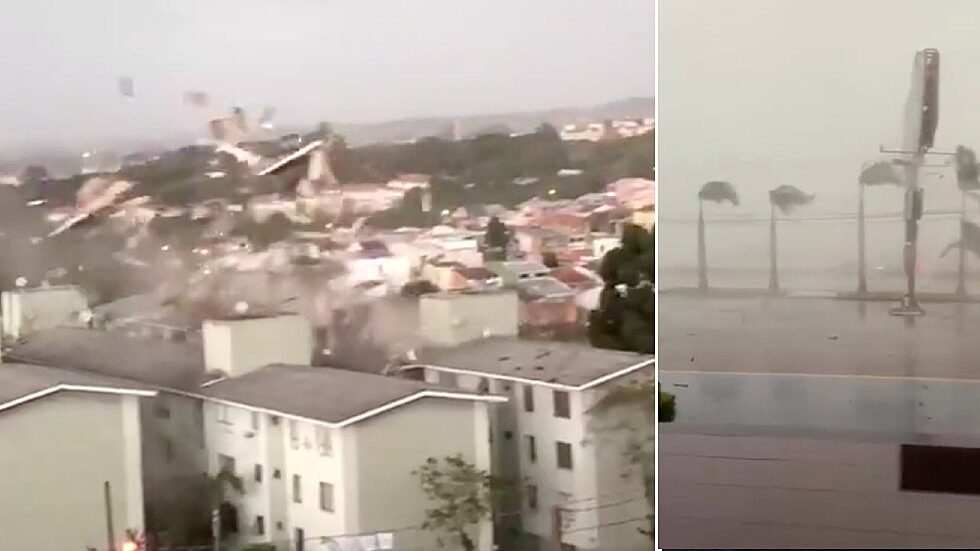RTWed, 01 Jul 2020 16:06 UTC

© Twitter/ @MarceloAveiro, Twitter @GeisieleScioA bomb cyclone tears off roofs in the Brazilian city of Curitiba
At least three people were killed as the southern Brazilian state of Parana was lashed by winds of up to 120kph from a 'bomb' cyclone which wreaked havoc across the area, bombarding the streets with high-speed debris.
The ferocious tempest ripped up trees, tore roofs off buildings and sent locals cowering indoors as shrapnel flew past their very eyes outside on Tuesday. Eyewitness video from Curitiba and elsewhere in Parana showcases the full fury of the bomb cyclone.
Some 193,000 people were left without power following the ferocious weather, while dozens of neighbourhoods were also left without a water supply.
Gusts of 111kph were recorded at Afonso Pena Airport, according to the National Meteorological Institute (Inmet), but speeds reached up to 120kph in other areas.
Some 8.2 millimeters of rain fell in a period of an hour and a half as the temperature reportedly dropped by nine degrees in 45 minutes, according to Inmet.
There were over 500 reports of falling trees and debris as vast swaths of the city were showered with sparks from damaged power lines.
Comment: The term "bomb cyclone" can apply to both summer rain, and winter snow storms if they meet the following criteria from
The National Ocean Service :
"Bombogenesis, a popular term used by meteorologists, occurs when a midlatitude cyclone rapidly intensifies, dropping at least 24 millibars over 24 hours. A millibar measures atmospheric pressure. This can happen when a cold air mass collides with a warm air mass, such as air over warm ocean waters. The formation of this rapidly strengthening weather system is a process called bombogenesis, which creates what is known as a bomb cyclone."
They develop and dissipate rapidly, and therefore are not often named as with tornadoes. An explanation from the UK's Met Office from 2019:




Comment: The term "bomb cyclone" can apply to both summer rain, and winter snow storms if they meet the following criteria from The National Ocean Service : They develop and dissipate rapidly, and therefore are not often named as with tornadoes. An explanation from the UK's Met Office from 2019: